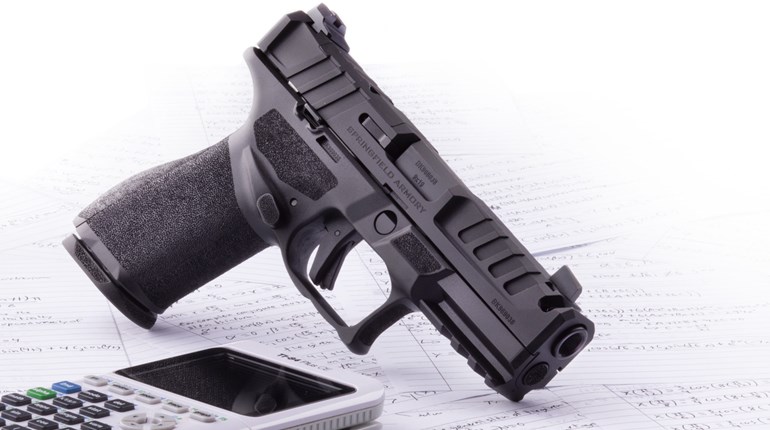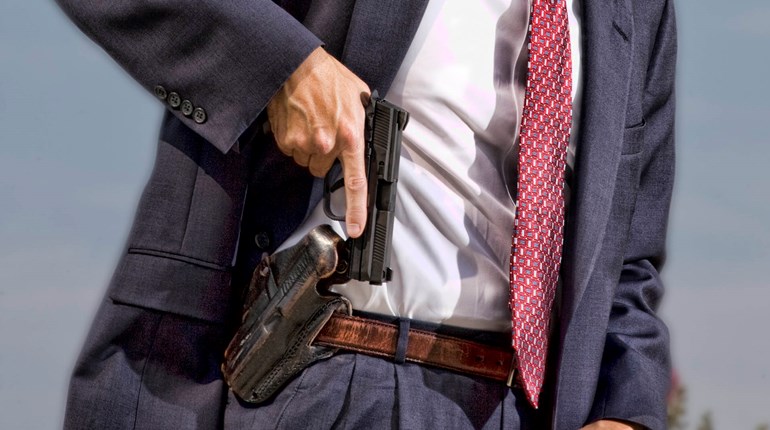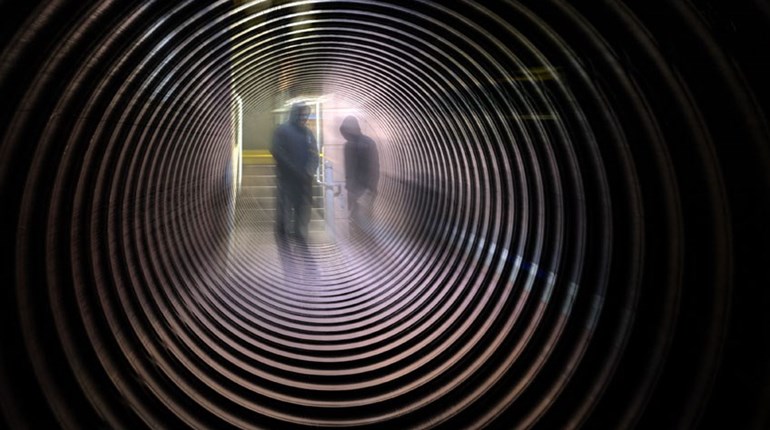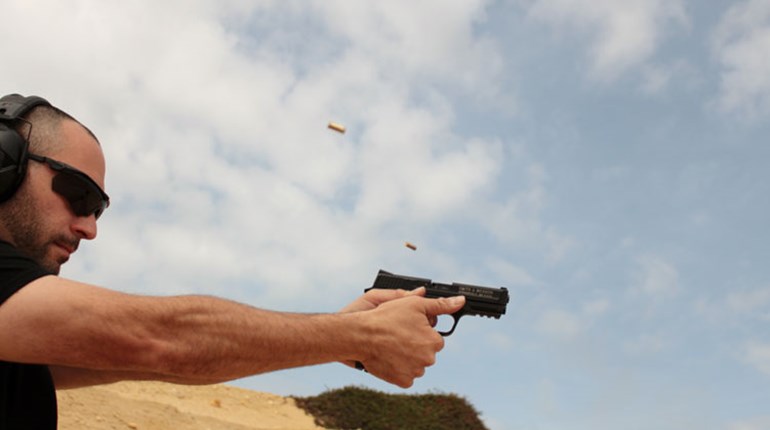
Col. Jeff Cooper taught us that the elements of accuracy, power and speed must be in balance to prevail in a defensive-shooting situation. You must make accurate hits—blazing away and missing gets you nothing! The power element suggests your pistol should be capable of delivering a fight-stopping blow. But there is a balance to be struck: Too much power is unwieldly and too little won’t get the job done. And, of course, you must get accurate, powerful hits as quickly as you can, as these kinds of life-or-death situations are over very quickly.
How should you practice these? When I get a break from teaching, I like to devote my range sessions to practical defensive skills using my daily carry pistol and ammunition. I use the Gunsite Option target that includes a 3x5-inch head-scoring area and an 8-inch upper-center chest-scoring area. You can use any silhouette target for these drills or make your own with an index card and a paper plate stapled to a piece of cardboard. While I practice from a concealment holster, you can also run these drills from a low-ready (muzzle-depressed) start position if you’re uncomfortable with drawing quickly or if you are shooting on a range that won’t allow it.
Head Shots
Head shots demand precision. You must use the sights and control the trigger. Head shots also instantly stop a deadly threat by achieving a central-nervous-system hit.
1. Place your target at 3 yards and set a timer for 2 seconds.
2. Draw, aim and fire into the head before the timer goes off.
3. Repeat at 7 and 10 yards.
4. Give yourself one extra second on the timer and repeat at 15 yards.
The 15-yard head shot is a nod to Jack Wilson, who stopped a murderer in his church with a single head shot in under 3 seconds. The exact distance was 14 yards, 3 inches.
Failure Drills
A failure-to-stop drill assumes two shots to the upper chest have failed to stop your assailant. The two chest shots should be delivered quickly, followed by a single shot to the head. This drill requires a mental shift, as the first two shots are delivered as quickly as possible, and the head shot requires slowing down for precision. Assuming a single assailant, the failure drill is my default response; two fast shots to the upper chest followed by an immediate head shot, if needed.
1. Place your target at 3 yards and set a timer for 3 seconds.
2. Draw, aim and fire two shots into the chest quickly and then one into the head area before the timer goes off.
3. Repeat at 5 and 7 yards.
25-Yard Exercises
I believe that you should be able to make reasonably quick body shots at 25 yards with your carry pistol; if you can’t, you might consider more training, and, perhaps, a change in your preferred handgun. Taking it further, strive to make head shots at 25 yards. It’s a true test of control of both yourself and your pistol.
1. Place your target at 25 yards and set a timer for 5 seconds.
2. Draw, aim and fire two shots into the chest before the timer goes off.
3. Reset the timer.
4. Fire one shot to the head before the timer goes off.
50-Yard Exercises
If you can get back to 50 yards on your range, try single shots and pairs to the body. Instead of rushing, shoot these with no time limit and work on precision. Why? Distance from a threat gives you time to act and, if necessary, to shoot.
Peace of mind comes from knowing you can control yourself, your emotions and your handgun, if necessary, to command your environment. Staying in control for the time needed to look at the sights, control the trigger and follow through, no matter what, should be your goal. Good practice can give you the necessary skills and the confidence to make accurate, powerful, fast hits even under stress.


































